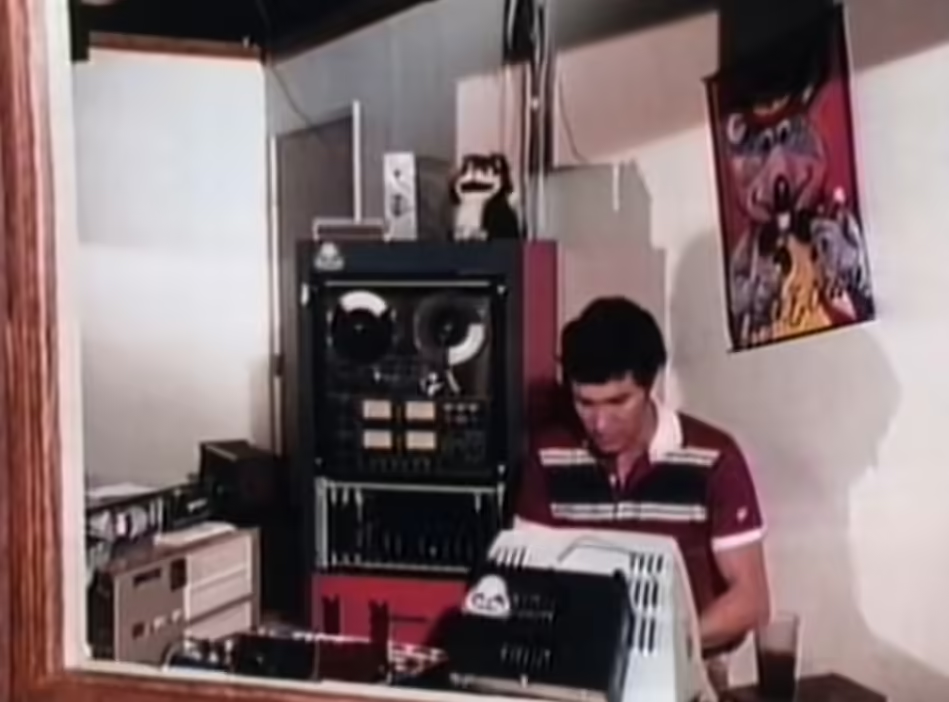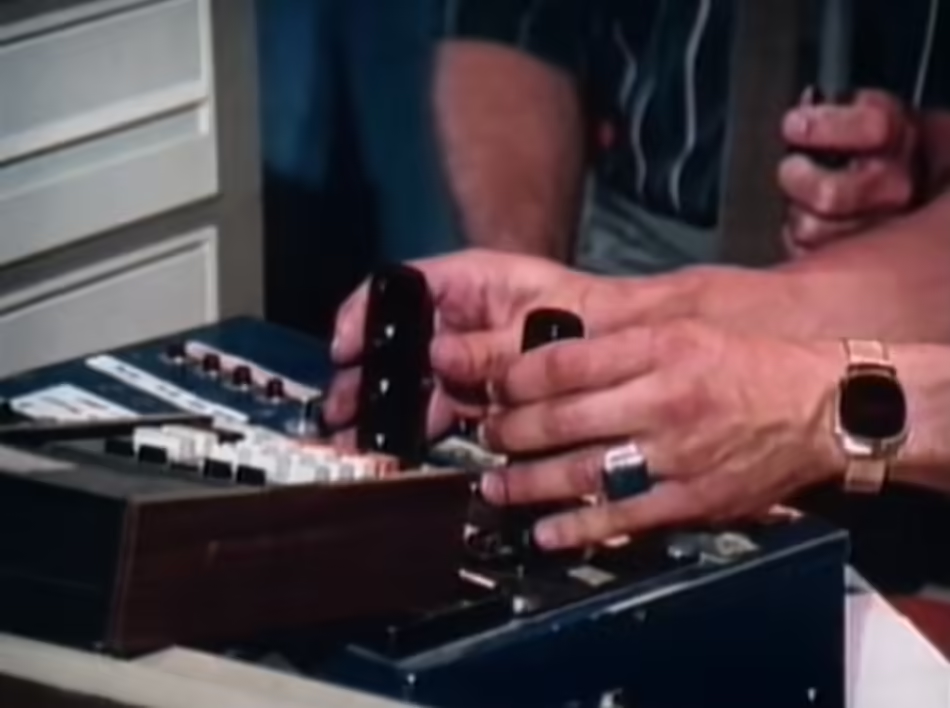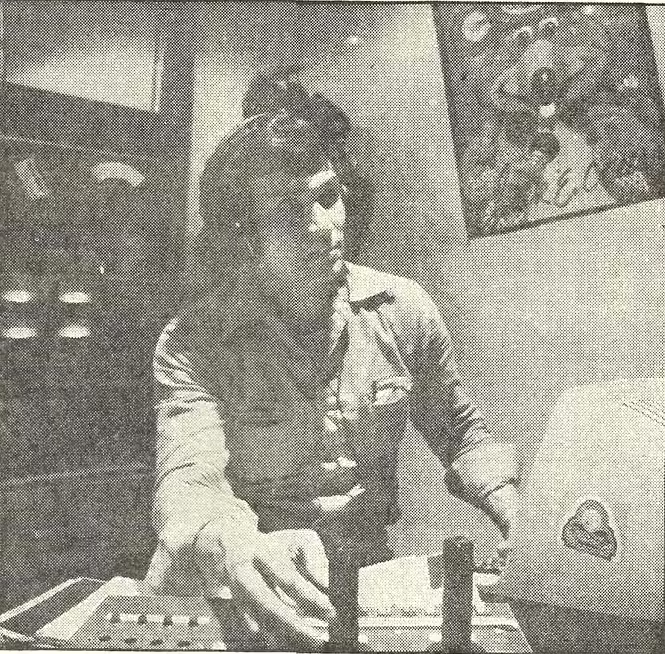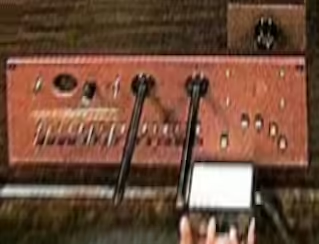Big C's Cyberamics Center
Big C’s Cyberamics Center was the special setup used for controlling and programming animatronics at the second ever Pizza Time Theatre location, San Jose, CA (1371 Kooser Rd), before its switch to Cyberamics in 1980, where it would then be transferred to the Sunnyvale, CA (1213 Innsbruck Drive) for continued use and upgrades.
SongCode
The main software being run was SongCode, a programming system that could transfer its command-based signals to audio reels, needing only a single audio channel to work. This software would continue to be used until 1990, where all the hardware and software would change to the Animation Programming System.
Main Hardware
The PDP-11 is the computer running the SongCode software. It is stated the hardware has 32Kb of memory, alongside a dual floppy disk drive and other various peripheral electronics. Due to its potential noisy hardware, it is assumedly stored in a separate room of the building, not seen in any footage.
ADM-3a
The ADM-3a was the visual display terminal for the entire system. It can be seen displaying SongCode-like signal instructions in the Kooser news video.[1] A large black device with a PTT label is seen on the back of the ADM-3a, in a spot connected exactly to the unit’s rear RS-232 expansion port. The expansion unit likely had custom hardware for tape data I/O, and potentially controlling the tape deck being programmed on.
CEC Tester
The CEC Tester is a small blue device used for controlling animatronics to program. In the early 2000’s it would briefly appear on eBay, being sold to an unknown buyer for an unknown price.In 2017 brand new footage of the Kooser Road location would surfacehttps://youtu.be/EdKLsomLbtY, which would provide a glimpse of the device being used at its store. Mike Hatcher is interviewed regarding the control systems behind the animatronics, in which he states, while referring to the device itself, ‘What this actually is amounts to is electronic puppeteering, only instead of having strings, you have buttons, switches, and joysticks.’, confirming the device is used to control the animatronics. From the layout of the device, and the comment of the Kooser employee, it can be determined that the 8 labeled directions of the 2 joysticks, 8 switches, and 8 buttons all are various ways of controlling a single character, allowing movements to be stuck on, manually pushed on, or dynamically controlled with a joystick. The restriction of 8 movements to a character lines up with the 8 movements given to any given character on a Cyberamic Control System Character Card.
Cyberamic Control System
The system is hooked directly to the Cyberamic Control System through unknown means.
Corporate History
Some time in 1980, likely before or during Kooser’s upgrade to Cyberamics, the control system was moved to the Sunnyvale, CA (1213 Innsbruck Drive). By 1981, the ADM-3a would be painted a deep red. The special TEAC A-2340 Tape Deck found in the San Jose, CA (1371 Kooser Rd) location’s Cyberamic Control System can be seen in the corporate setup, likely meaning the Kooser’s Cyberamic Control System was brought to PTT Corporate alongside the SongCode setup, while a standardized Cyberamic Control System was sent alongside the Cyberamic upgrade to the store in 1980.
Upgraded Animation Controller
After the move to the corporate offices, the CEC Tester device would be upgraded into a wider, red controller, which would be embedded into the wood desk inside the programming room. The main controls are very similar, being two joysticks, a set of switches, and a set of buttons. The difference is the extension from eight controls to sixteen, filling out the entire range of a single Character Card. While the original system likely had a switch between each half of the card, the new system allowed full control. The joysticks 8 directions likely still controlled the first half, being used for characters, though this new system could have used diagonal directions for a full range, or had a switch for using the latter half of the card. Another new section is five buttons shaped to fit the user’s hand. The ergonomic layout could lend to them being used for animating, and due to only five buttons being used, they might have been used for controlling the main five character mouths. A metal button and dial are also found outside the embedded controller, it is unclear what these would be used for.
PDP 11/23 Upgrade
Though much of the SongCode Control System’s life at corporate is unknown, by 1983 its PDP-11 computer would be upgraded to a PDP 11/23, keeping the same architecture while drastically reducing the size.[1] A photo of the desk in June of 1983 also shows the red ADM-3a swapped out for a VT-100 variant, suggesting that the system upgrade happened before June.[2]
Rock-afire Explosion Integration
Some time between Pizza Time Theatre’s merging with ShowBiz Pizza place in March of 1984 and the ShowBiz-programmed SPP Happy B-day Liberty tape in June of 1986- the SongCode Control System would integrate support for programming Rock-afire Explosion tapes, connecting itself to the Grey Box system.
ShowBiz Pizza Time System
There is only one picture of the full SongCode setup at corporate headquarters, which by this point had moved to the ShowBiz Pizza Time Corporate Office in Irving, Texas, reveals the potential last iteration of the hardware before being changed to the Animation Programming System. Going over the hardware from left to right:
Top Row
- Unknown Device (Blue & Gray)
- Yamaha RM804
- VT100 (Unknown Submodel)
- Likely just used as a display terminal connected to the main PDP 11/23 unit.
- Unknown Monitor
- Unknown Control Device (Below Monitor)
- TASCAM OB-44 Tape Deck
- Used for playing Rock-afire Explosion Showtapes, same model as used in the Grey Box.
Bottom Row
- Red Panel
- Wires are hanging from under it, could be housing the Grey Box system for controlling the Rock-afire Explosion stage.
- Cyberamic Control System
- Used for controlling the Cyberamic stage.
- A small section above the character cards has been used for some patch panels.
- Unknown Device (Gray, Potentially the back of a small tape deck)
- TEAC A-2340 Tape Deck
- Used for playing Cyberamic showtapes, though not the same model as the standard Cyberamic Control System.
3-Stage Upgrade
The hardware potentially had minor changes near the end of its life to accommodate for the programming of the 3-Stage SPP Concept Unification Premiere showtape, though potentially the changes could have only come through the SongCode software.
Final Showtapes
The first recorded showtape for the Animation Programming System was the CEC September 1990 Show, meaning the presumed last tapes made for the SongCode Control System were:
- CEC Kids / American Pride
- The last Cyberamics tape.
- SPP Rolfe & EarlBday Wave
- The last SPP-produced Rock-afire Explosion Tape.
- SPP Concept Unification Premiere
- The first and last 3-Stage tape.
The following showtapes were potentially programmed in SongCode, despite being released after the APS integration. This is due to neither appearing in the 1990-1992 APS Floppy Cases, which is a detailed archive of APS tapes during its start.
- King ‘90 I
- King ‘90 II
Rock-afire Explosion tapes going forward would be exclusively programmed by Creative Engineering, with the only new segments coming shortly after in the SPP Best Of 1 KidsFriends and SPP September 1990 Show tapes. Continued tapes would reuse signals from previous shows.




